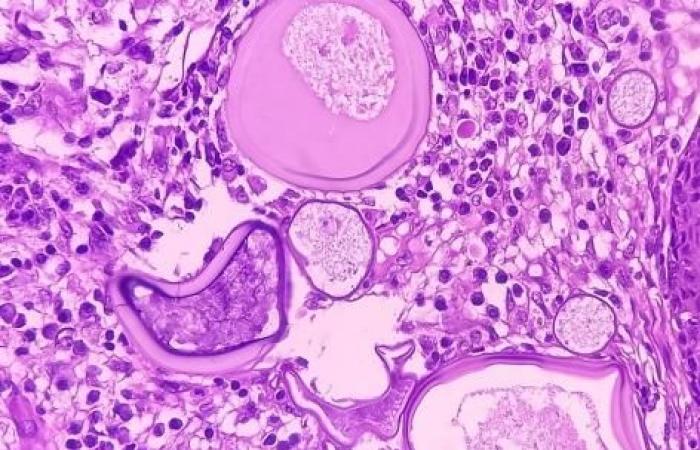THE ESSENTIAL
- An Indian man in his thirties presented with a massive tumor on his left eyelid.
- This patient was also affected by rhinosporidiosis, a parasitic infection, in his left eye.
- According to the medical team in charge of this case, the tumor developed in response to the presence of the parasite in the eyeball.
In India, a man in his thirties developed a tumor the size of a grapefruit on his left eyelid after a parasite reproduced in his eyeball.
A tumor associated with a parasitic infection
According to information from Daily Mailthe patient contracted an angiofibroma, a giant tumor, which had started five years previously with a slight swelling of the left eye. Over the years, this tumor increased in size and obstructed his orbit. The man then lost his vision on his left side.
The patient was treated by surgeons at the All India Institute of Medical Sciences. The tumor was removed during surgery. It was fifteen centimeters (cm) in diameter and attached to a fifteen cm long flap of eye tissue, but it was not cancerous. According to their conclusions, published in the British Medical Journalthe man suffered from angiofibroma associated with rhinosporidiosis, a parasitic infection.
A parasite mainly found in India and Sri Lanka
Considered rare, rhinosporidiosis infection occurs mainly in the tropical regions of India and Sri Lanka. Reported cases mostly occur after a person swims in rural areas or streams near a farm.
For the medical team, the tumor occurred due to the presence of the parasite. The body responded to this infection by inflaming the surrounding tissues. However, doctors do not know how long the patient had this parasite in his body or how he got it.
Despite many remaining questions, the surgery was a success. The man can see again, and his eye has returned to normal.
Health






